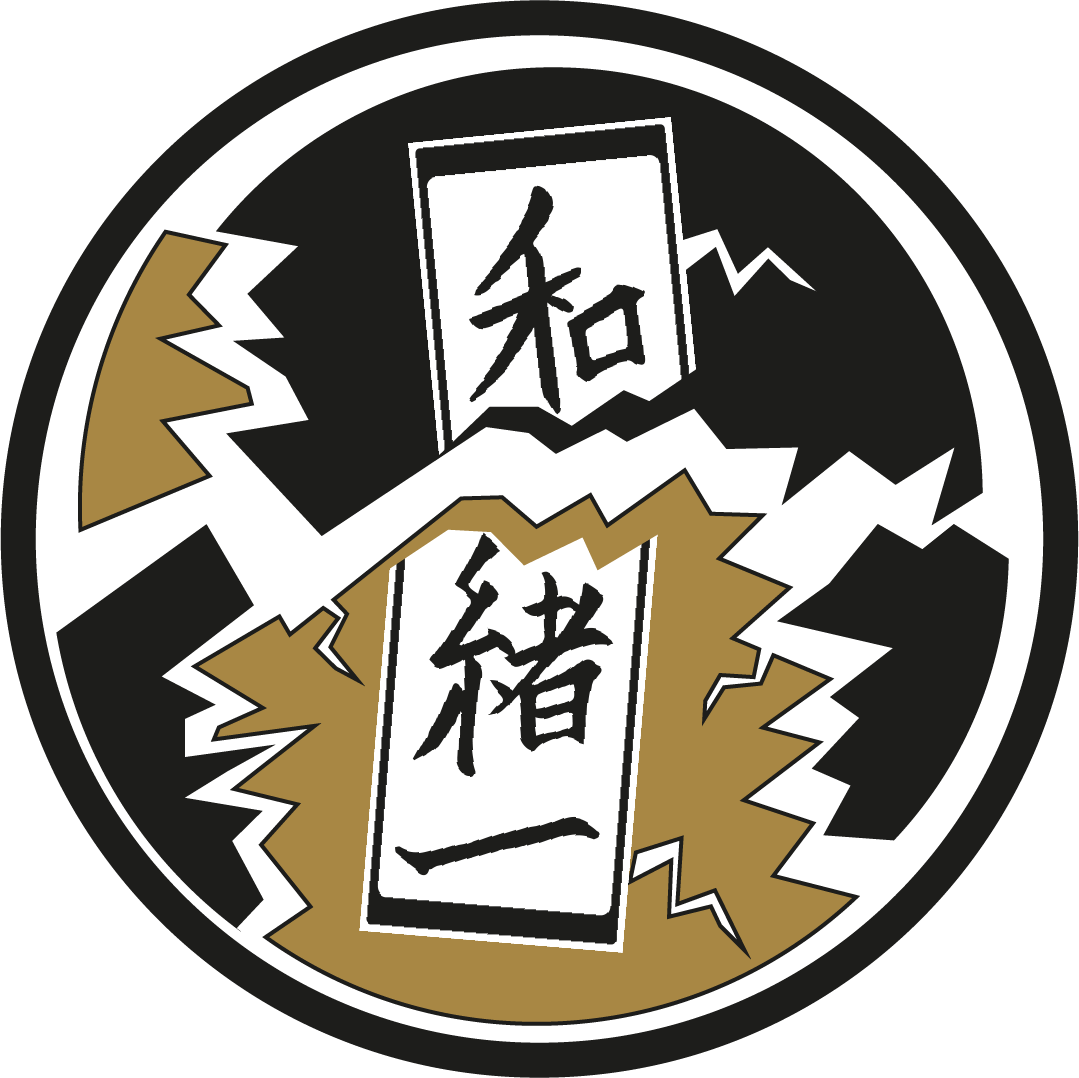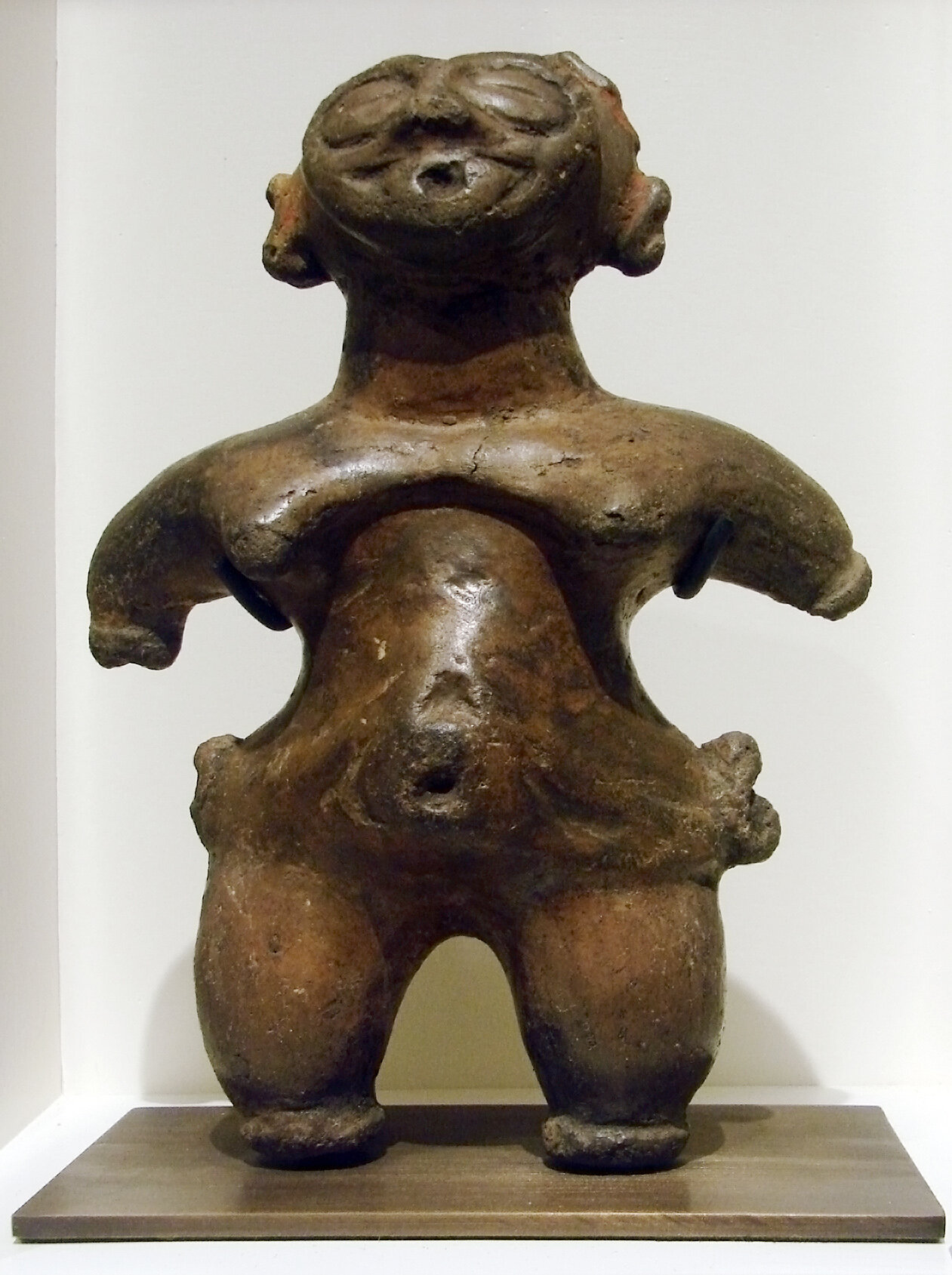Dogū – Japan’s Oldest Mystery
8 minutes read
Just like in the Pre-Jōmon article, we would like to present some considerations before diving into today’s topic. Dogū 土偶 are intrinsically connected to Jōmon populations and cultures, and the lack of written sources from this prehistoric period affects any research on them. By the 3rd century AD, Jōmon people and habits had almost completely been replaced by new colonisers who introduced rice culture, a socially defining activity with a significant impact on all subsequent developments in the archipelago. Worldviews and spirituality were substantially redefined when the rice culture emerged, and people stopped making dogū. Unfortunately, writing was a skill adopted only by the 6th century AD, long after the last dogū were crafted, leaving little to no mention of them in written records. Accordingly, every academic work related to dogū is based on suppositions and interpretations of archaeological findings; therefore, what is presented here also belongs to the realm of speculation. The purpose of this article is to present what is, possibly, Japan’s oldest mystery, and how it made its way into popular culture. However, by no means do we claim this is the one correct interpretation of the functions and roles of dogū in their societies.
Dogū bust from the Late Jōmon period. © The Metropolitan Museum of Art
What Are Dogū and Where Do They Come From?
Dogū 土偶 are Japanese neolithic clay or stone statues, which were crafted during the Jōmon period and have human, mostly female, features. Dogū is a word created by the first Japanese archaeologists during the Meiji period (1868–1912) to simply suggest the idea of human-like figures (tama / gū 偶) made of clay (tsuchi / do 土). In many ways, dogū resemble other neolithic crafts, such as the Venus of Willendorf, which usually depict pregnant females. This theme was prevalent in crafting throughout the Jōmon stages.
‘Jōmon Venus’ dogū, Middle Jōmon, Nagano Prefecture. ©Takuma-sa
‘Venus of Willendorf’ from 25,000 BC in Austria.
©MatthiasKabel
Yet, as time progressed, decorative patterns were becoming more elaborate, while female features were tuned down to the point of leading some scholars to define a few dogū as genderless. The new degree of abstraction and distortion within the shapes of those dogū shows the diversification in later periods. This can clearly be observed in later typologies of dogū, such as those of the ‘goggle-eyed’ ones from the Kamegaoka site that have exaggerated proportions and feature odd body patterns, not resembling a naked human body. These variations have been subject to many hypotheses: some suggest that they are a sign of tattooing, while others, more convoluted ones, identify them as a sign of aliens.
‘Snow goggle’ dogū, Latest Jōmon, Guimet Museum, Paris.
‘Heart-shaped face’ dogū, Late Jōmon, Tokyo National Museum. © Daderot
As abstract as dogū became, distinct masculine traits have not appeared in any statue unearthed so far, leading specialists to believe that they exclusively bear female features. One possible explanation of this particularity might lie in the sekibō 石棒, phallus-shaped stone rods. Many believe those clearly male objects to be complementary to dogū. Regardless of their functions, it can be stated that dogū and sekibō manifest an urge to represent human features during the Jōmon period.
Sekibō, Latest Jōmon, display at the Museum of the Archaeological Institute of Kashihara, Nara Prefecture.
The Many Possible Functions of Dogū Within Jōmon Societies
In recent years, scholars have presented different hypotheses about the purposes of specific dogū, depending on their size, theme and form. This enables a new approach: reclassifying them while giving more consideration to their features and the locations where they were unearthed rather than fixing the umbrella term ‘dogū’ to all of them.
To this day, about 20,000 dogū have been unearthed between the Kansai region and Hokkaidō. Surprisingly, such crafts have not been found yet in the western regions of Honshū nor in Kyūshū. Therefore, scholars assume that dogū crafting was a cultural feature of northern Jōmon populations who practiced it from 10,000 BC to approximately the 3rd century BC. A common feature of many dogū, especially those associated with the earliest times, is the inflated belly, a probable sign of pregnancy, which sometimes was made even more explicit by representing the act of giving birth. These statues have commonly been found in the locations of Jōmon villages connected to sacrality, religious functions and burial grounds. A recurrent finding, especially related to burial practices, is the deliberate shattering of dogū prior to laying people to rest. However, dogū found in habitations are generally intact, suggesting those clay dolls had a different use.
‘Masked’ dogū, Late Jōmon, Mori Shogunzuka Museum. © Ismoon
Dogū, Late Jōmon, Guimet Museum, Paris.
It is generally believed that dogū were related to religious and sacred activities. However, the debate about their functions, usage, and symbolism is still ongoing. A commonly shared interpretation is that dogū, paired with their phallic counterparts, where used by shamans as tools to channel magic powers and perform rituals associated to fertility and the cycle of life and death. As such, dogū could have had the ability to channel spiritual forces used for the sake of villagers to protect them in life, safeguard them in death, and bestow fertility to the whole community. The recurrent theme of pregnancy could have represented the overall notion of fertility, the act of giving life, but could also be meant to protect pregnant women and assure a safe delivery.
Shattering dogū in burial grounds led some scholars to believe that they could have been used for some sort of ancestry cult. According to such hypotheses, dogū and sekibō might have been objects of worship, granting both protection and fertility as well as manifesting the presence of deceased kinsfolk. However, this explanation cannot completely explain why dogū strictly bear female features, and the ancestry cult might not have been that developed during the Jōmon period.
Nowadays, many identify dogū as ritual tools, but for a relatively long time, since the 1960s, scholars have tried to explain them through theories related to ‘mother goddess’ or ‘Venus’ worship. This school of thought was quite popular within the Neolithic Studies and translated to Japan by associating dogū with cults who prayed to a natural earth-goddess to grant fertility, which is a common theme in many agricultural societies. However, the weakness of this interpretation is the fact that Jōmon populations mostly relied on hunter-gatherer practices, and agriculture was still incipient.
‘Goggle-eyed’ dogū, Latest Jōmon, unearthed in the Tōhoku region. © The Metropolitan Museum of Art
The Jōmon Boom and the Growing Interest in Dogū
One might wonder how dogū made the leap from an academic interest into popular culture. This was likely due to a Jōmon frenzy captivating Japanese society from the 1960s to the 1980s, which put a spotlight on archaeological discoveries. A joint effort was made within the Japanese academic world to define the roots of what could be considered Japan and ‘the’ Japanese culture. Following this trend, Jōmon sites were praised as they provided tangible proof of the first inhabitants of the archipelago, granting the basis for ‘the’ Japanese origin story. This craze got out of hand to the point that an amateur archaeologist, Fujimura Shinichi, was tempted to fabricate his own findings. Although Fujimura has been active since 1970s, his fabrications were discovered only in 2000, which came to be known as the ‘Japanese Paleolithic Hoax’ (kyū sekki netsuzō jiken 旧石器捏造事件). The scandal had important repercussions because a significant portion of the academic world, along with the general public, believed that civilisation in Japan had occurred way earlier than everywhere else in Asia.
Despite being revealed as a hoax, it should be acknowledged that Fujimura’s fabrications contributed to the popularisation of the Jōmon period amongst laymen, sparking their interest in Japanese archaeology. For two decades (1960–1980), tourism related to Jōmon sites as well as their occurrence in media increased significantly.
Dogū attracted a special attention for their mysterious and intriguing looks that fed public imagination. By the 1970s, dogū were a source of inspiration for Japanese avant-garde artists, which is very similar to what happened with Tribal art in the West. The most famous Japanese artist influenced by dogū imagery is probably Okamoto Tarō. Some of his most notable works, such as the ‘Tower of the Sun’ and ‘Myth of Tomorrow’, are reminiscent of the neolithic statues.
‘Myth of Tomorrow’ (asu no shinwa 明日の神話) by Okamoto Tarō, Shibuya station, Tokyo. © yukato
Japanese intelligentsia was captivated by dogū to such an extent that Yasunari Kawabata, Nobel prize-winning author, always kept one on his desk as a sort of lucky charm and mascot.
Kawabata Yasunari and his ‘heart-shaped face’ dogū, 1969. © Yousuf Karsh
Dogū in Popular Culture
As soon as intellectuals picked up on dogū, it did not take long for the entertainment media to make use of them in their productions in order to satisfy the growing demand for Jōmon-related content. In popular media, the ‘goggle-eyed’ dogū were championed to stand for the neolithic statues in general, probably due to their appealing, mysterious traits.
‘Goggle-eyed’ dogū, Latest Jōmon, unearthed in Aomori Prefecture, Tokyo National Museum.
‘Goggle-eyed’ dogū, Latest Jōmon, unearthed in Miyagi Prefecture, Tokyo National Museum. © World Imaging
The gaming industry was among the first to pick up on dogū, using them as monsters to defeat for example in Dragon Quest and the Megami Tensei role-playing game series.
Terracotta Warrior, Dragon Quest series. ©Akira Toriyama © Square Enix
Arahabaki, Megami Tensei series. ©Kazuma Kaneko © Namco
Later on, dogū became collectible monsters to be raised by trainers who fought fierce battles and tried to be the very best. These game worlds were also recreated in animated TV series for children.
Claydoll from the Pokémon series. © Ken Sugimori © Game Freak © The Pokémon Company
Shakkoumon from the Digimon series. © Akiyoshi Hongo © Bandai
Soon after, the manga industry followed this trend. Clay statues made frequent cameo appearances and a humorous original work which follows the everyday life of a dogū family was created.
Dogū Family. © Shinji Nishikawa © Kadokawa
However, the apotheosis of Japanese creativity in adopting dogū imagery probably was achieved by the TV series ‘The Ancient Dogoo Girl’ (kodai shōjo doguchan 古代少女ドグちゃん) and its sequel ‘The Ancient Dogoo Girls’ (kodai shōjotai dogūn faibu 古代少女隊ドグーンV). These comedic TV shows aired between 2009 and 2010 and clearly placed themselves within the B movie genre by merging tokusatsu (super-hero tv serials with special effects), magical girls, and a (heavy) touch of sexiness. The series portrays a mythical girl who fights yōkai, monsters from Japanese folklore, wearing a bra that resembles a dogū.
The Ancient Dogoo Girl Trailer, by Iguchi Noboru, broadcasted on MBS from 2009 to 2010.
©古代少女ドグちゃん ©Copyright king record.Co.,Ltd.
I would say that this portrayal might not have been that far away from what the Jōmon populations envisioned while crafting their dogū.
There are countless more references to dogū in Japanese popular culture, so the next time you enjoy a Japanese video game, manga or a TV show, pay close attention because you might stumble upon some!
Written by Marty Borsotti


















